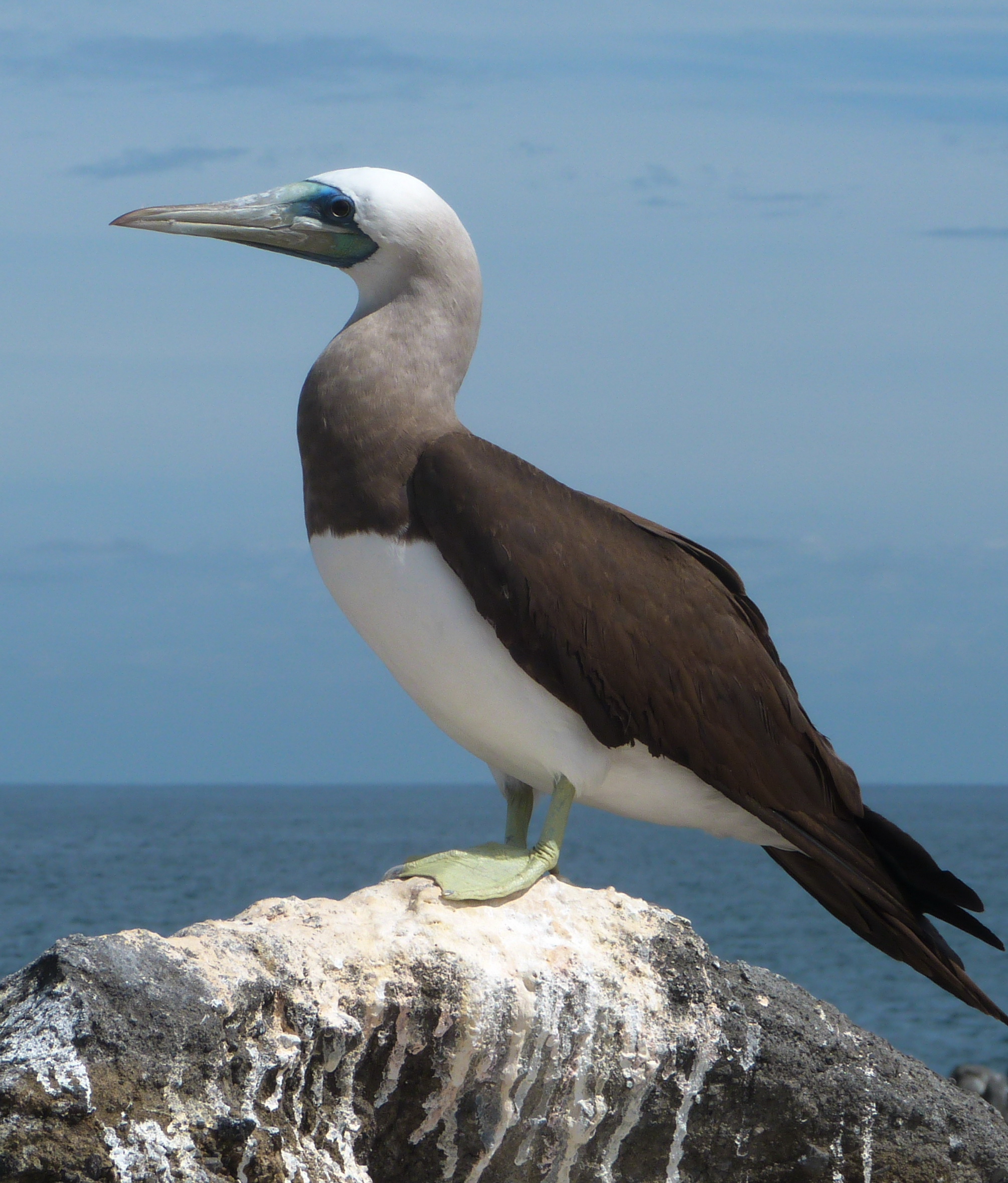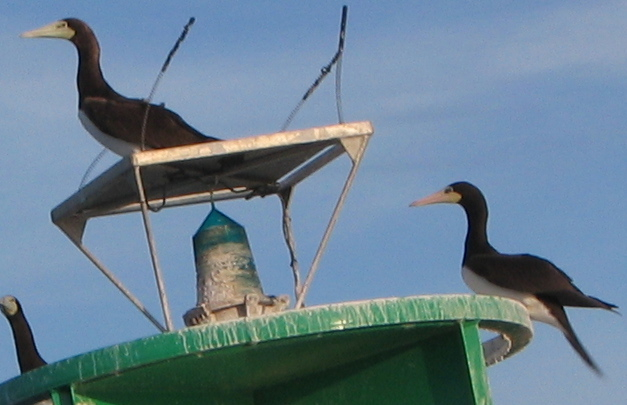Published in the Ocean Watch column, Honolulu Star-Advertiser © Susan Scott
February 20, 2012

Hawaii’s brown boobies have dark-brown necks and heads (see below), but Mexico’s browns, like this one, are often lighter.
For a seabird fan like me, a little splash of guano is no big deal. But last week, during a nighttime voyage from La Paz to Mazatlan, Mexico, a booby and a frigatebird tested my limits.
So cute, I thought, looking up at the rear end of the booby bird that had worked so hard to balance on Honu’s spreader (the crossbar on the mast). It’s a challenge with webbed feet on a swaying boat, but brown boobies are good at teetering on moving objects. These are the seabirds that often grace the navigation buoys marking Hawaii’s channels.
A moment later, several frigatebirds appeared, squabbling over the flat top of the mizzen mast. A female won the perch and settled down for a ride.
Craig and I knew that our bare heads were at risk from these hitchhikers, but we claimed we didn’t care. Craig really didn’t. After taking the first hit, he wiped the guano from his hair with a paper towel and went below to take a nap.
I sat back for my three-hour watch, admiring the dexterity of the two species perched in the rigging 35 feet above. That these birds managed to navigate past wires, windmill, radar dome, mast lights and antennas seemed a miracle of nature.
Or a curse. Bombs away! Gray-and-white globs of fish-stinking guano began falling, and in an hour my hat, sweatshirt, the cockpit cushions, Plexiglas hatches and canvas gear covers were loaded with lumps of awful offal. I dug out an umbrella and beneath it listened to the splash and plop.
Good Lord, I thought, how much guano can two seabirds produce?
Plenty, it turns out, and that waste product has been one of their downfalls.
Guano is valuable as fertilizer because it’s rich in phosphorus, a natural element essential to all life on Earth. As they grow, plants take phosphorus from the soil; to keep growing crops, farmers must add the mineral.
Phosphorus is not a renewable resource, but it is present in animal waste, particularly in guano. Unfortunately, mining it wrecks the environment for the birds. Today most of the world’s guano reserves are depleted, as are the seabird colonies that produced it.
My seafaring adventure with guano ended when Craig woke up. I had tried deck lights, flashlight and a strobe to scare the birds off the masts, to no avail. Craig’s banging the sail halyards near the birds’ perches did the trick.
In a Mazatlan marina the next day, a nice Mexican man helped us tie up the boat. “Want me to wash your boat?” Luis said, looking over Honu’s decks. “I’m good with bird s—.”
I will always welcome seabirds on my boat, but if they want another free ride, the little darlings will have to ride on the rail with their bottoms aimed over the side.

Hawaiian Brown Boobies on a channel marker. Photo Courtesy Scott R. Davis
©2012 Susan Scott